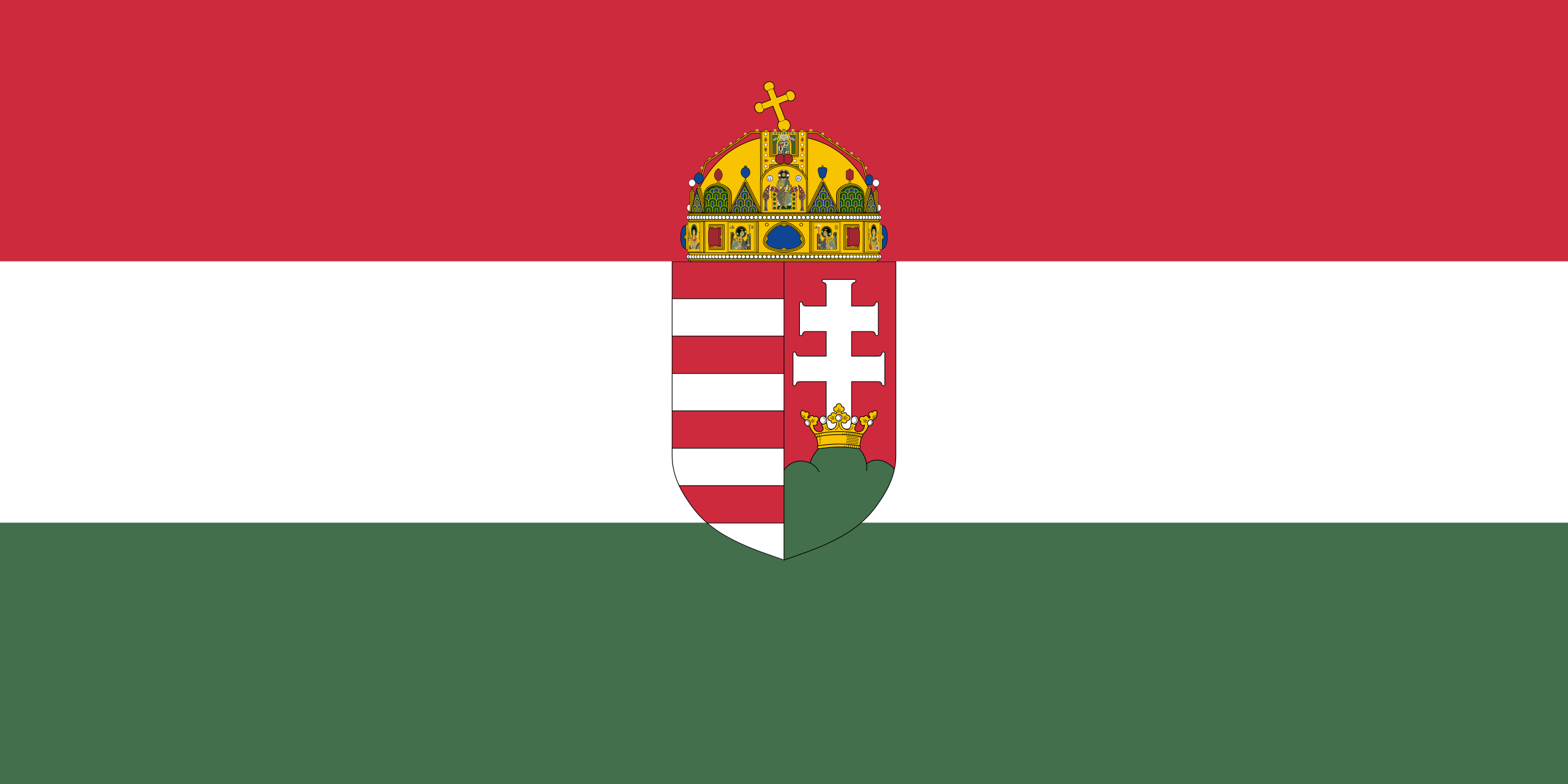
Kingdom of Hungary
The Royal Restoration of Hungary
"Order, Crown, and Sword — Hungary Reborn"
Post-War Hungary: A Nation in Search of Identity
After the collapse of the Soviet Union and the German victory in the East, Hungary found itself at a crossroads. While nominally a member of the Axis bloc, the country had grown increasingly unstable during the later stages of the war. Internal divisions between monarchists, military traditionalists, Arrow Cross holdovers, and nationalist technocrats left the nation fractured and leaderless by 1945.
With the threat of Soviet remnants extinguished and neighboring Romania and Slovakia falling further under SS influence, Hungary began to drift—in search of a unifying symbol.
The Crown and the General
Into this vacuum stepped General Gusztáv Jány, a highly respected military leader who had commanded Hungarian forces on the Eastern Front with both ruthless efficiency and patriotic zeal. Unlike other Axis generals, Jány had avoided close entanglement with the SS or overt political factions, maintaining the image of a loyal but independent Hungarian patriot.
Amid growing calls for the restoration of the monarchy, and in the absence of a suitable Habsburg or native royal figure, the National Assembly—under pressure from both Berlin and the Hungarian Army—offered Jány the crown in a formal coronation in Budapest, October 1945.
He accepted the title of "Király Jány Gusztáv I", declaring a new royal era: the Kingdom of Hungary Reforged.

Rule and Policy
As monarch, King Jány I has ruled with a military-technocratic cabinet, emphasizing:
- Reconstruction of the countryside after years of war and occupation.
- A strong centralized monarchy as a bulwark against SS influence and foreign domination.
- Continued alignment with the German Reich, though on more equal terms.
He revived symbols of Hungary’s medieval and Austro-Hungarian heritage while banning Arrow Cross-style radicalism. His regime is nationalist, authoritarian, but less ideologically extreme than neighboring Axis states.
Regional Role
Hungary under Jány serves as:
- A buffer state between the SS-heavy territories of Slovakia and Romania.
- A guardian of traditionalist monarchist ideology in Central Europe.
- A quietly ambitious power, seeking to reclaim influence in the Balkans.
Berlin tolerates the monarchy as long as it remains loyal; however, certain Reich factions (especially within the SS) view Jány's independent streak with suspicion.
Present Status (1946)
The Kingdom of Hungary stands as a rare anomaly: a client state with a restored crown, ruled not by fanatic ideologues or SS-appointed governors, but by a general-turned-king, commanding the loyalty of his people through discipline, legacy, and national pride.


The Hungarian Civil War (1945–1946)
The Black Cross Rebellion
Brief Context
After the European war and the continent’s reorganization, the Hungarian Parliament crowned István IV Király in October 1945 as an attempt by the conservative and military elite to restore stability. Király represented a monarchic–authoritarian path distinct from the fanaticism of the Arrow Cross era: seeking order, moderation, and tactical distance from extreme National Socialist ideology. This choice deeply fractured Hungary’s far right.
Main Actors
- King István IV Király — New monarch, representing the attempt at monarchical stabilization; supported by senior army officers and conservative circles.
- Royalist Army Generals — Pragmatic officers backing the Crown to preserve the state against anarchy.
- Radical Arrow Cross faction (“Black Cross”) — Ultraradical group led by Miklós Várady, veterans of the Hungarian Waffen-SS and fanatical officers demanding a National Socialist Hungarian state.
- External Powers — Berlin covertly aids factions ensuring ideological loyalty; the U.S. and ex-Allied powers remain passive in this phase.
Timeline of Key Events
October 1945 — Coronation and Polarization
Coronation of István IV Király. Royalist speeches call for “unity and order.” The Black Cross denounces “cowardice and betrayal,” publishing manifestos demanding the king’s removal.
12 November 1945 — Urban Insurrection
The Black Cross launches uprisings in Budapest, Szombathely, and Danube cities. They seize local barracks, radio stations, and administration buildings. Bloody incursions and summary executions follow.
Nov–Dec 1945 — Battles of Budapest
Royalist army and the Royal Guard counterattack. Fierce house-to-house fighting, barricades, snipers, flamethrowers, and light armor devastate the capital. Historic districts fall into ruins.
December 1945 — Spread of Conflict
Insurrection spreads to Győr and Sopron. Black Cross secures support from ex-officers and armored reserves. Germany covertly supplies arms, radios, and tactical advisors.
January 1946 — Monarchist Counteroffensive
Royalist forces, backed by rural militias and foreign supplies, encircle rebel strongholds. Black Cross units weaken from shortages and lose cohesion.
Feb–Mar 1946 — Collapse of the Insurrection
Capture of Miklós Várady. Public executions of rebel leaders in Heroes’ Square. Mass repression, arrests, and purges in the army and administration.
Forces, Tactics, and Equipment
Royalist Forces (Király)
- Army brigades: mechanized infantry, divisional artillery.
- Royal Guard elite units: light tanks, panzerfaust anti-tank weapons, remaining artillery.
- Peasant militias and urban volunteers.
- Tactics: encirclements, precision strikes, communications control.
Black Cross Insurgents
- Waffen-SS veterans, paramilitaries, rebel garrisons.
- Weapons: rifles, submachine guns, cached German small arms, limited anti-tank guns.
- Tactics: night assaults, seizing radios, assassinations, executions of collaborators.
Casualties and Human Impact
Estimated 50,000–80,000 dead from fighting, executions, and political violence. Tens of thousands arrested; mass exile of radicals to Austria and Germany. Budapest suffers catastrophic destruction.
Political and Geopolitical Consequences
- Militarization of the State: Király rules under emergency laws; the army gains decisive political power.
- Repression: Purges and trials against the Black Cross. Some cells survive abroad.
- German Influence: Despite defeat of rebels, Berlin retains leverage through covert networks.
- Cold War Flashpoint: Hungary becomes an ideological battleground between the Reich and antifascist forces.
- Social Legacy: Collective trauma; political polarization and memories of barricades and executions shape national identity.
